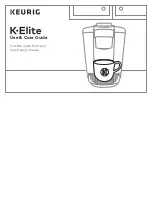
4 MAINTENANCE
Routine maintenance must be carried out on the system accor-
ding to the manufacturer's directions.
Any maintenance operation must be performed by qualified
personnel only.
When the equipment is working, all the access and operating
doors and covers must be closed and fixed.
No type of modification must be made to the system.
Prevent metal powder from accumulating near the aeration fins
and over them.
Disconnect the power supply before every operation!
Carry out the following periodic controls on the
power source:
* Clean the power source inside by means of low-
pressure compressed air and soft bristel brushes.
* Check the electric connections and all the connec-
tion cables.
For the use and maintenance of the pressure
reducers, consult the specific manuals.
For the maintenance or replacement of torch
component TIG/MIG, electrode holder and/or
earth cables:
* Check the temperature of the component and make
sure that they are not overheated.
* Always use gloves in compliance with the safety stan-
dards.
* Use suitable spanners and tools.
Failure to perform said maintenance will invalidate all war-
ranties and exempt the manufacturer from all liability.
5 POSSIBLE ELECTRICAL FAILURES
Machine does not switch on (L1 off):
- Line fuse blown
- Check for presence of mains voltage
Limited power delivery with low loadless voltage:
- Connection with incorrect power supply voltage
- Phase missing
- Faulty remote control switch
Wire feed stops (L2 on):
- Faulty torch button
- Rollers worn
- Torch nozzle melted (wire stuck)
- Open side panel of the wire feed unit
No power command:
- Thermal protection cut in (L2 on)
- Faulty remote control switch
- Open side panel of the wire feed unit
No motor-gas-power command
:
- Faulty torch button
No arc striking:
- Thermal protection cut in (L2 on)
- Faulty remote control switch
- Incorrect earth connection
For any doubts and/or problems do not hesitate to contact
your nearest customer service centre.
6 POSSIBLE FAULTS IN THE MIG WELDING
Porosity:
- Gas humidity
- Dirt, rust
- Welding arc too long
Hot cracks:
- Dirty pieces
- Joints bound
- Welding with too much heat
- Impure weld material
- Base material with high levels of carbon, sulphur and other
impurities
Poor penetration:
- Current too low
- Non-constant wire feed
- Edges too far away
- Chamfer too narrow
- Excess protrusion
Poor melting:
- Sudden torch movements
- Insufficient inductance
- Voltage too low
- Resistance caused by oxide
Side incisions:
- Excess welding speed
- Welding voltage too high
Breakages:
- Unsuitable type of wire
- Poor quality of pieces to be welded
Excess spray:
- Voltage too high
- Insufficient inductance
- Cap dirty
- Torch slanting too much
Profile defects:
- Excess wire protrusion (on torch)
- Current too low
Arc instability:
- Check gas delivery
- Check power source
23
Содержание NEOMIG 1600
Страница 137: ...137 1 1 1 1 1 1 NR10 1 1 2 1 2 1 3 1 4 EMC EN60974 10 1 4 1 1 4 2...
Страница 143: ...143 3 5 6 A1 MIG L1 4 TIG MIG 5 L1 L2 L2 L2 6 MIG...
Страница 144: ...144 7 7 1 MIG 7 7 7 1 1 SHORT ARC 2a 8 SHORT a SPRAY ARC b SPRAY ARC 2b 7 1 2 9 10 9 10 2a 2b...
Страница 149: ...149 Schema Diagram Schaltplan Sch ma Esquema Diagrama Schema kopplingsschema Oversigt Skjema Kytkent kaavio NEOMIG 1600...
Страница 150: ...150 Schema Diagram Schaltplan Sch ma Esquema Diagrama Schema kopplingsschema Oversigt Skjema Kytkent kaavio NEOMIG 2200...
















































